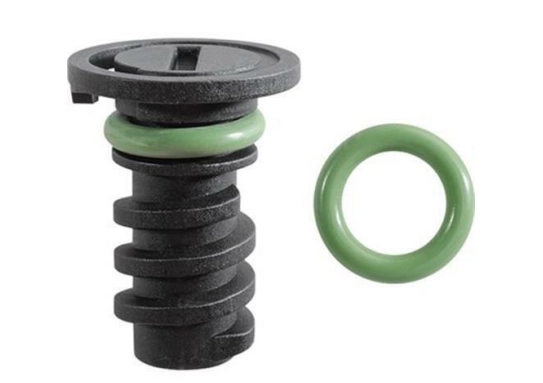Sealing Solutions for Differential Pinions in Automotive Applications
Understanding Differential Pinion Seal Importance and Maintenance
The differential pinion seal is an essential component of a vehicle's drivetrain. It plays a crucial role in ensuring the efficient operation of the differential, which is responsible for transferring power from the engine to the wheels while allowing them to rotate at different speeds, especially when turning. In this article, we will delve into the function, importance, and maintenance of the differential pinion seal, helping you understand its role in vehicle performance and longevity.
Function of the Differential Pinion Seal
The differential pinion seal is designed to prevent gear oil from leaking out of the differential casing. The differential houses several critical components, including the pinion gear, ring gear, and various bearings. These components work under high loads and within a sealed environment filled with lubrication oil. The pinion seal is positioned at the end of the pinion shaft, effectively sealing the differential and ensuring that oil remains contained within it.
By maintaining the proper level of lubrication, the pinion seal helps reduce friction among moving parts, prevents overheating, and minimizes wear and tear. This lubrication is vital for optimal efficiency, helping the vehicle operate smoothly and reliably.
Importance of a Functional Pinion Seal
A functional differential pinion seal is essential for several reasons
1. Preventing Fluid Leaks If the pinion seal fails, gear oil may leak out, leading to inadequate lubrication. This can result in severe damage to the differential components, including the pinion and ring gears, bearings, and housing.
2. Ensuring Safe Operation Low lubricant levels can lead to a compromised differential, which may result in unusual noises while driving, such as whining or grinding sounds. This not only affects comfort but can pose safety risks if the differential fails while driving.
3. Reducing Repair Costs Regular maintenance and timely replacement of a worn or damaged pinion seal can prevent more significant, costly repairs down the line. If the differential sustains damage due to a lack of lubrication, repairs can be extensive and financially burdensome.
4. Optimizing Performance A well-functioning pinion seal contributes to the overall performance of the vehicle. It supports smoother acceleration, better fuel efficiency, and enhanced handling, thereby improving the overall driving experience.
Signs of a Failing Pinion Seal
Recognizing the signs of a failing differential pinion seal can help you take timely action. Keep an eye out for the following symptoms
diff pinion seal

- Oil Puddles Noticing oil spots or puddles under your vehicle is a clear indication of a leak. If these spots are near the differential, the pinion seal may be compromised.
- Unusual Noises Whining or grinding noises coming from the differential can suggest that the seal has failed, resulting in inadequate lubrication.
- Increased Vibration If you experience more pronounced vibrations while driving, it may indicate an issue with the differential, including a faulty pinion seal.
- Burning Smell A burning odor could signal overheating due to low lubricant levels, often a result of a leaking pinion seal.
Maintenance and Replacement
Maintaining a healthy differential pinion seal begins with regular inspections. During routine vehicle maintenance, a technician should check for fluid leaks and inspect the condition of the seal. If any issues are found, it's essential to address them promptly.
The replacement of a damaged pinion seal involves several steps, including
1. Removing the Driveshaft Disconnecting the driveshaft to access the differential.
2. Removing the Pinion Gear Taking out the pinion gear and bearings to reach the old seal.
3. Installing a New Seal After cleaning the housing, a new seal is installed, ensuring it is properly seated to prevent future leaks.
4. Reassembling Rebuilding the differential, reattaching the driveshaft, and refilling the differential with the appropriate lubricant.
Conclusion
In summary, the differential pinion seal plays a pivotal role in the performance and safety of your vehicle. Understanding its function and recognizing the signs of a failing seal can help you take proactive steps to maintain your vehicle’s drivetrain. Regular inspections and timely repairs can extend the life of the differential and enhance your overall driving experience, ensuring that your vehicle remains in top condition for the roads ahead.
-
Understanding Automotive Oil Seals: Essential Components for Engine and Shaft Protection
News Jul.30,2025
-
The Importance of Heavy Duty Seals in Industrial and Residential Applications
News Jul.30,2025
-
Exploring Industrial Oil Seals: From Felt Oil Seals to TTO and CFW Solutions
News Jul.30,2025
-
Essential Guide to Oil Seals: From Radial to Metal-Cased Seals for Industrial Reliability
News Jul.30,2025
-
Choosing the Right Oil Seals and Gaskets for Industrial and Automotive Applications
News Jul.30,2025
-
Cassette Seals: Durable Sealing Solutions for Harsh Environments
News Jul.30,2025
-
Understanding the Front Main Engine Seal: Purpose, Maintenance, and Installation
News Jul.29,2025
Products categories















